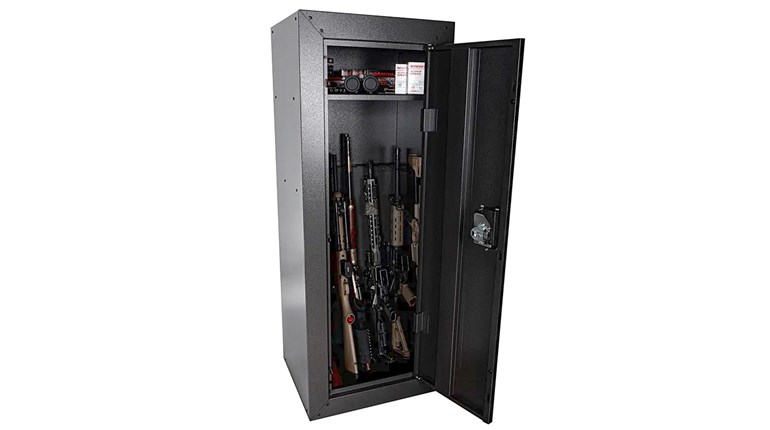
Like many of us in the shooting fraternity who have a degree of seniority, my eyes aren’t what they used to be. For that reason, I invested in a few red-dot sights from different makers to see if they could help my marksmanship skills, which have been diminishing due to the inability to see my iron sights. I initially started with rimfires: a rifle and a pistol, each chambered in .22 LR, with the hope of familiarizing myself with red-dots sights before transitioning to select centerfire guns I currently use for target shooting and home defense. What originally seemed like a good idea has become the source of frustration.
The first time I looked at the dot it resembled a teardrop, which made me think my eyes were worse than I initially thought. I got a second opinion from a younger set of eyes, and to my relief, they saw the same thing. I expected a round dot—not a smear upon which to focus. Is this normal?
Also, is the dot supposed to move when adjusting for windage and elevation similar to zeroing scope with a more traditional reticle? Dials on two of the red-dots suggest each click is .5 MOA and the other, which is more of screen type sight as opposed to a tube, lists 1 MOA per click. None of the three seem even close if they move at all. I’d really appreciate any insight you can provide.
David Thorpe, Austin, TX
I can sympathize with your frustration, having had some similar experiences with various types of electronic sights.
Most of the red-dot sights on the market have some degree of “bloom” or appear to flare when turned up to the higher intensity levels. This is less apparent in higher-end models, but tends to be a fact of life in entry-level offerings. I recommend lowering the dot’s intensity so you can see it well enough in prevailing light conditions to identify it on your target, leaving those maximum settings for when the light conditions make them necessary. If the dot still looks like a smear or odd geometric shape with the intensity dialed down, there is little you can do but live with it or return the sight for replacement. Expect a little flare, but it should be somewhat circular in shape.
Armed with this information, it might be a good idea to visit your local dealer and compare what you are seeing with your red-dots to other brands available. In particular, look at the most expensive and the least expensive available, which should provide you some perspective.
In reference to adjusting the dot to obtain a satisfactory zero for the firearm it is mounted on, expect the movement to adjust the strike of the bullet on the target to correspond with a conventional rifle or pistol scope. Like the standard firearm optic, I like to “exercise” the windage and elevation dials fully across their ranges of motion several times and then centering the dot back at mechanical zero before zeroing the optic to the gun. When any optic is new the internal mechanism may be a little “sticky.” “Exercising” the dials spreads the lubricant and may smooth out any rough spots in the movement, which allows the adjustment to correspond with the host firearm.
I usually zero my red-dot sights at 50 yards unless there is an extenuating circumstance that dictates otherwise. Remember, .5-MOA clicks only move the impact of the round .25 inch per click at that distance. In this case, it means after you boresight and shoot your first group, you may have to move the windage and elevation more clicks for correction to zero the optic than originally perceived.
Assuming you can achieve zero with your red-dot sight and rifle, shooting a “square drill” will validate the accuracy of the windage and elevation adjustments or lack thereof.
The square drill starts with shooting a three- to five-shot group at a known zero for a particular gun. I usually move the windage followed by the elevation screws the recommended amount of clicks for 12 inches of movement after each group until I form a 12-inch square. Ideally, I will end up at the same place on the dials that I started at with the final group ending up on top of the original group. If your red-dot sight can’t track and make consistent movements of the rounds impacting on the target, it needs to go back to the factory for repair.
The move to red-dot sights has its own set of challenges and solutions. Not all are as difficult as you seem to have experienced. Start with known, quality and tested equipment and your shooting will be extended on into the future. Don’t hesitate to experiment to see what works best for you once you validate the quality of the equipment with which you are working. As a result, the familiarity you gain will aid you with noticeable success—in the form or enhanced proficiency—provided you practice regularly.




































